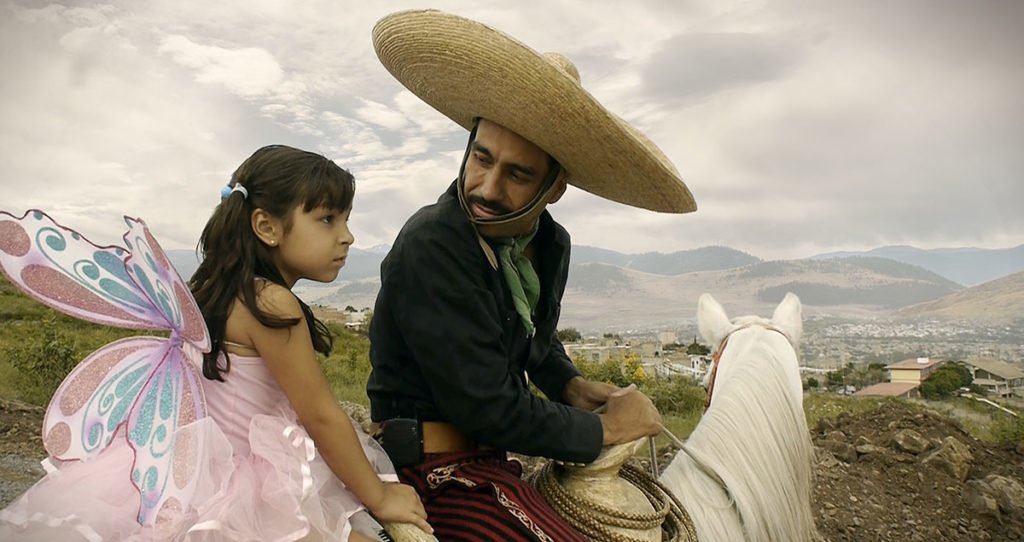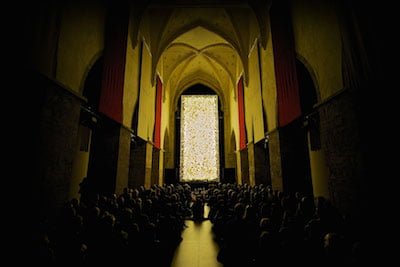Review: Tuesday @ Sheffield’s DocFest
June 23, 2016

El Charro de Toluquilla
Audience Award winner Presenting Princess Shaw tells the story of the unlikely collaboration between aspiring New Orleans singer/songwriter and ‘YouTube star’ Samantha Montgomery – AKA Princess Shaw – and Tel-Aviv video artist and musician Ophir Kutiel – AKA Kutiman. Kutiman creates ingenious ‘visual symphonies’ from YouTube performance videos, and uses one of Princess Shaw’s videos as the basis for his latest composition; unbeknownst to Shaw, who toils away in digital obscurity as her viral moment approaches. There is a degree of artifice to Presenting Princess Shaw – it is unclear when or whether Shaw and Kutiman are performing in recreations of the build-up to their collaboration, which are shown concurrently – and though purists may baulk at this, it is entirely fitting, as Presenting Princess Shaw is fundamentally a film about artifice and the currency of celebrity. Beneath its heart-warming veneer, Presenting Princess Shaw explores the idea of how we commodify ourselves in the digital milieu; though this doesn’t detract from the film’s feel-good arc; or Shaw’s infectious lack of guile, which will charm you out of your scepticism.
 Given its subject, Fenton Bailey and Randy Barbato’s Mapplethorpe: Look at the Pictures is a somewhat staid look at the life of photographer Robert Mapplethorpe. But what enlivens Look at the Pictures is the pictures themselves, which are as stark as they were when they first caused a moral panic. Mapplethorpe is painted as a born outsider and rebel, a ‘ruined cupid’ for whom photography was a process of self-revelation; but also ruthlessly ambitious and not averse to using people for career advancement. Bailey and Barbato marshal various New York luminaries – from Debbie Harry to Fran Lebowitz – to evoke a bohemian New York long since passed, of which Mapplethorpe’s photos are so redolent. But Look at the Pictures never seems willing to delve into the excesses of the ’70s gay scene; and it’s here that the film falls short, lingering on the periphery Christopher Street, the Mineshaft S&M club and Fire Island. Look at the Pictures can never quite decide if it is sober art history or salacious tell-all, struggling to serve two masters. Though it doesn’t rank alongside the gold standard of photography docs, McCullin (2012), Look at the Pictures is a worthwhile reminder of, or introduction to, a body of work which retains its power to provoke.
Given its subject, Fenton Bailey and Randy Barbato’s Mapplethorpe: Look at the Pictures is a somewhat staid look at the life of photographer Robert Mapplethorpe. But what enlivens Look at the Pictures is the pictures themselves, which are as stark as they were when they first caused a moral panic. Mapplethorpe is painted as a born outsider and rebel, a ‘ruined cupid’ for whom photography was a process of self-revelation; but also ruthlessly ambitious and not averse to using people for career advancement. Bailey and Barbato marshal various New York luminaries – from Debbie Harry to Fran Lebowitz – to evoke a bohemian New York long since passed, of which Mapplethorpe’s photos are so redolent. But Look at the Pictures never seems willing to delve into the excesses of the ’70s gay scene; and it’s here that the film falls short, lingering on the periphery Christopher Street, the Mineshaft S&M club and Fire Island. Look at the Pictures can never quite decide if it is sober art history or salacious tell-all, struggling to serve two masters. Though it doesn’t rank alongside the gold standard of photography docs, McCullin (2012), Look at the Pictures is a worthwhile reminder of, or introduction to, a body of work which retains its power to provoke.
The Charro of Toluquilla was one of the festival’s singular delights. It tells the story of Jaime Garcia Dominguez, a self-styled charro – a form of Mexican cowboy, not to be confused with a mariachi – whose macho image and womanising ways hide a secret: he has been living with HIV for the past fifteen years. Miraculously, Dominguez has been able to sire a healthy child with his deeply religious girlfriend, and must choose between the lure of his reckless lifestyle and the responsibilities of fatherhood. Director Jose Villalobos steps back and allows the garrulous charro to take full flight, but with a keen eye for the absurdities of what he is capturing; and absurdity abounds. But there is also a darker undercurrent running thought the film, with Dominguez’s car functioning as a form of confessional in which his fears are laid bare, as is a dawning awareness that the road he has chosen is a lonely one. The Charro of Toluquilla is perfectly pitched between bursts of scurrilous humour and a pervasive sense of melancholy; playing with notions of masculinity and heroism, religious iconography and cultural archetypes to create a visually distinct and dramatically rich work.

A Family Affair
A Family Affair details Dutch director Tom Fassaert’s complicated and often disturbing relationship with his 95-year-old grandmother, who suddenly and mysteriously invites him to visit her sprawling South African home, where she lives alone attended to by her servants. Fassaert’s view of his grandmother is informed by the stories he has been told by his father – who describes her as ‘a mother with a mask’ and ‘a born manipulator’; a famous model who put her two sons in a children’s home – and the footage shot by his father: the family recorded everything. Curious to know if there is more to his grandmother than her bad reputation, Fassaert decides to accept her offer, and finds himself entangled in a deeply tense and unsettling situation which sheds new light on the family’s fraught relationship. A Family Affair bears more than a passing resemblance to Capturing the Friedmans (2003) in its copious use of home movie footage, and its evocation of a family dynamic in which filming is used as a substitute for intimacy. There are some deeply troubling components to this story, but it is grimly captivating to see the layers of pain and secrecy peeled away. A Family Affair is an intensely personal and disquieting work that lingers long in the memory.
India in a Day brings together footage shot by amateur filmmakers to show a single day in the country: the 10th of October, 2015. Executive produced by Ridley Scott, India in a Day is the latest in a series of similar experiments which include Britain in a Day (2011), Japan in a Day (2012) and Italy in a Day (2014). From 16,000 submissions, writer/director Richie Mehta does an admirable job of curating this footage into a fascinating picture of a culture in transition. From sunrise to sunset, India in a Day offers a unique insight into the lives of everyday Indians in which the playful, profound, plaintive, picturesque and poetic intermingle. Over the course of this day we experience the heights of elation and the depths of misery; crippling poverty and upward mobility; the pull of tradition and the pressures of modernity; caste, religious, generational, gender and regional tensions, but also a sense of optimism and possibility as India grows into an emergent world power. Naturally, there is a degree of performance in these self-recorded portraits of quotidian life, but the confessional quality of many of these contributions is deeply moving. India in a Day is a beguiling piece which celebrates the vibrancy, beauty, energy and complexity of India and its people.
Follow Daniel Palmer on Twitter at @mrdmpalmer.




Comments